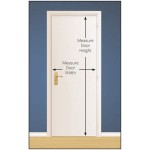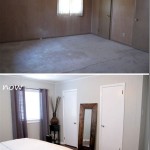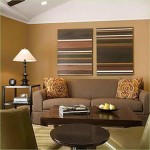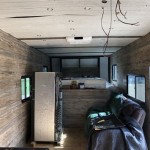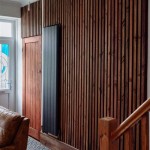What Is Contemporary Interior Design Style?
Contemporary interior design is a constantly evolving style that reflects the current trends and innovations of the present moment. It’s often confused with modern design, but it is distinct in its emphasis on the here and now, rather than referencing a specific design period like the mid-century modern era. Understanding contemporary design requires an appreciation for its dynamic nature and its core principles, which emphasize simplicity, sophistication, and the use of sustainable and technological elements.
The essence of contemporary design lies in its ability to adapt and incorporate influences from various movements and cultural shifts. Unlike the rigid structures of defined design periods, contemporary design embraces fluidity, allowing for a personalized and curated aesthetic. This translates into spaces that are clean, functional, and often feature a blend of textures, materials, and colors that are relevant and engaging in the current design landscape.
Contemporary interiors are characterized by a careful balance between comfort and functionality. The goal is to create a space that is both visually appealing and practical for everyday living. This often involves minimalist principles, open floor plans, and an emphasis on natural light to create a sense of spaciousness and airiness. Elements that are considered innovative and eco-friendly are often integrated, reflecting a growing awareness of sustainability and technological advancements in design.
Key Characteristic: Minimalism and Clean Lines
One of the defining characteristics of contemporary interior design is its adherence to minimalism. This doesn't necessarily translate to stark or cold spaces, but rather a conscious effort to declutter and simplify the environment. Furniture pieces are typically chosen for their functionality and clean lines, avoiding excessive ornamentation or embellishments. The focus is on quality over quantity, with carefully selected items that serve a purpose and contribute to the overall aesthetic.
The use of clean lines is crucial in achieving this minimalist aesthetic. Straight lines, geometric shapes, and smooth surfaces are frequently incorporated into the design. This extends not only to furniture but also to architectural details such as windows, doorways, and lighting fixtures. The overall effect is a sense of order and tranquility, allowing the eye to move freely through the space without being overwhelmed by visual clutter.
This minimalist approach extends to the treatment of walls and floors. Walls are often painted in neutral colors, such as white, gray, or beige, to create a backdrop that allows other elements in the room to stand out. Similarly, flooring choices tend to be simple and understated, with options like hardwood, concrete, or tile often preferred. Area rugs are used sparingly, and when they are, they typically feature simple patterns or solid colors that complement the overall design.
Key Characteristic: Embracing Natural Light and Open Spaces
Contemporary design places a high value on natural light. Large windows and skylights are often incorporated to maximize the amount of sunlight that enters the space. This not only enhances the visual appeal of the room but also contributes to a sense of well-being and connection to the outdoors. When natural light is limited, strategic use of artificial lighting is employed to create a similar effect.
Open floor plans are another hallmark of contemporary design. The concept of breaking down barriers between rooms creates a sense of spaciousness and fluidity. Living rooms, dining areas, and kitchens often flow seamlessly into one another, promoting a more social and interactive environment. This also allows for better circulation of air and light throughout the space.
The use of glass and other transparent materials is common in contemporary interiors. Glass walls, doors, and partitions can be used to create visual connections between rooms while still maintaining a sense of separation. Mirrored surfaces are also frequently incorporated to reflect light and create the illusion of more space. These design elements contribute to the overall airy and open feel that is characteristic of contemporary interiors.
Landscape design also plays a vital role. Integrating the outdoor environment with indoor living spaces is a common feature. This can be achieved through the use of large windows that offer panoramic views, outdoor living spaces that extend seamlessly from the interior, and the incorporation of natural elements, such as plants and water features, into the design.
Key Characteristic: Use of Neutral Color Palettes with Bold Accents
Neutral color palettes form the foundation of most contemporary interiors. Shades of white, gray, beige, and brown are commonly used for walls, floors, and large furniture pieces. These neutral colors create a calming and versatile backdrop that allows for the introduction of bolder accent colors. The neutral base allows for flexibility as it is easy to update the overall look with just a few pops of color.
Bold accent colors are used strategically to add visual interest and personality to the space. These colors can be introduced through artwork, decorative accessories, textiles, and even statement furniture pieces. Common accent colors include shades of blue, green, yellow, and red. The key is to use these colors sparingly and intentionally, creating a balanced and harmonious composition.
Texture plays an important role in complementing the color palette. A variety of textures, such as smooth, rough, matte, and glossy, can be used to add depth and dimension to the space. This can be achieved through the use of different materials, such as wood, metal, glass, and fabric. The interplay of textures creates a tactile and visually stimulating environment.
The use of metallics, such as silver, gold, and copper, is also common in contemporary design. These metallic accents can be incorporated through lighting fixtures, hardware, and decorative objects. They add a touch of glamour and sophistication to the space, while also reflecting light and enhancing the overall sense of brightness.
Key Characteristic: Embracing Technology and Sustainability
Contemporary design actively incorporates the latest technological advancements. Smart home systems, automated lighting, integrated entertainment systems, and energy-efficient appliances are all common features in contemporary interiors. The goal is to create a space that is both functional and responsive to the needs of its occupants. Technology is seamlessly integrated into the design, enhancing convenience and comfort.
Sustainability is also a key consideration in contemporary design. Eco-friendly materials, such as bamboo, recycled glass, and reclaimed wood, are often used in construction and furnishing. Energy-efficient lighting and appliances are also prioritized to minimize the environmental impact of the space. The concept of sustainable design extends beyond the materials used to encompass the overall functionality and longevity of the space.
The use of natural and organic materials is another way that contemporary design embraces sustainability. Indoor plants, natural textiles, and sustainably sourced wood are commonly incorporated into the design. These elements not only add visual appeal but also contribute to a healthier indoor environment. They help to purify the air, reduce stress levels, and create a sense of connection to nature.
Adaptability is another aspect of sustainable design. Furniture and fixtures that can be easily repurposed or recycled are preferred. The goal is to create a space that is not only aesthetically pleasing but also responsible and environmentally conscious.
In summary, contemporary interior design is more than just a style; it's a reflection of the current moment. It emphasizes comfort, functionality, and sustainability while constantly adapting to new trends and technologies. It's a dynamic and personalized approach to creating living spaces that are both beautiful and practical.

Contemporary Design Style And The Essentials To Master It Décor Aid

A Complete Guide To Contemporary Interior Design And Academy

Modern Vs Contemporary Interior Design Style Your Go To Guide At Home

15 Best Modern Interior Design Ideas Of 2025 Decorilla

What Is Contemporary Design The Beginner S Guide Jd Institute Of Fashion Technology

30 Best Contemporary Design Style Ideas Of 2025 Decorilla Interior

Evergreen Design Elements That Define Contemporary Interiors 7 Features Last The Test Of Time Archdaily

Contemporary Vs Modern Interior Design Everything To Know Décor Aid

Contemporary Interior Design Style All You Need To Know Beautiful Homes

Contemporary Design Style 101 Everything You Need To Know About
Related Posts

